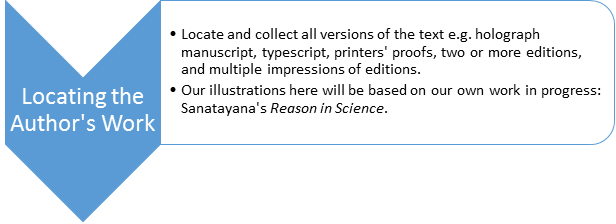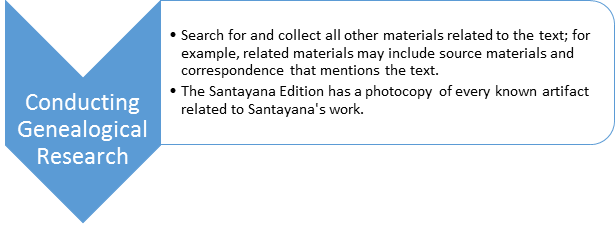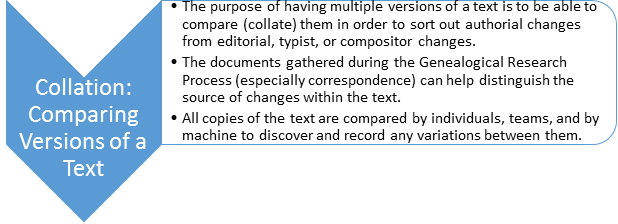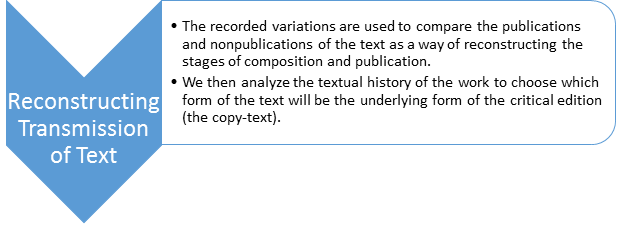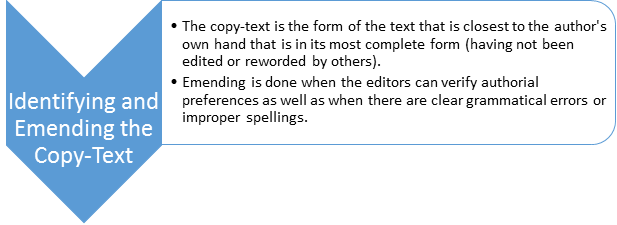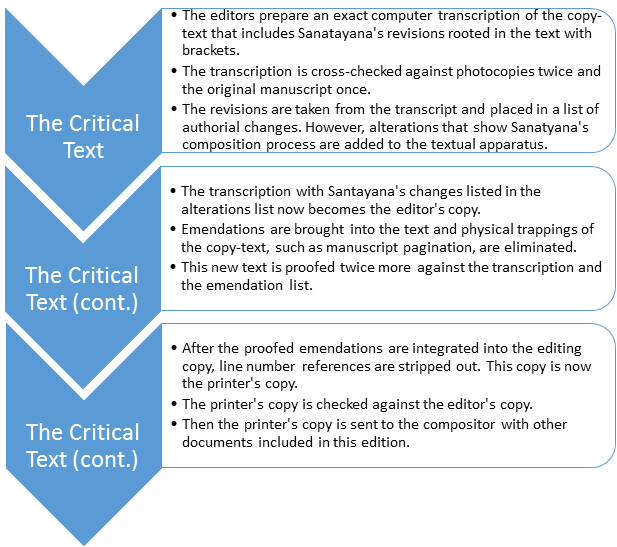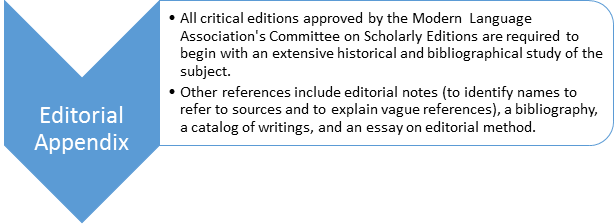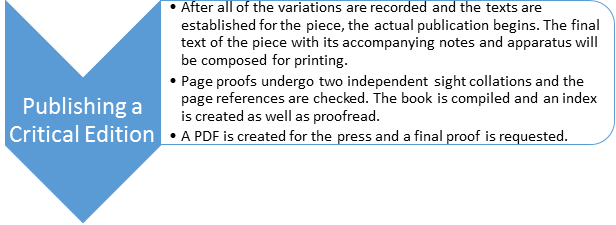The Production of a Critical Edition
A critical edition aims to restore and preserve texts that are complete, faithful to the author’s intentions, and carefully documented regarding their composition and development. This can mean locating lost materials, restoring suppressed or altered texts, or identifying editorial or printing errors. In addition to this detective work, a critical edition must also document and explain variations among different versions and justify decisions made in determining the final version, that is, the critical text. The result is a reliable text that honors the work of the author, supports the research of scholars, and provides inspiration for the intellect and imagination of all. Jonathan Eller illustrated this process for the Pierce Project and we thank him for his permission to adapt his work here.*
Production of a critical edition can be understood as a process with the distinct stages listed below.
1. Locating Surviving Forms of the Author’s Work
2. Conducting Genealogical Research
3. Collation: Comparing Multiple Versions of a Text
4. Reconstructing the Transmission of the Text
5. Identifying and Emending the Copy-Text
6. The Critical Text
7. Editorial Appendix
8. Publishing a Critical Edition
Each stage involves several steps. The figure below shows each stage with a summary of the editorial process. Click to see illustrations of the work done at each stage.
The Santayana Edition, part of The Institute for American Thought (IAT) in the IU School of Liberal Arts on the campus of Indiana University Purdue University Indianapolis (IUPUI), is located in the Education/Social Work Building at 902 West New York St, Indianapolis, Indiana 46202.
Contact Information:
Martin Coleman, Director
317-278-2637
![]()
* Adaptation by Santayana Edition intern Adelea Wilman, an MA student in English and Professional Editing (2015).

